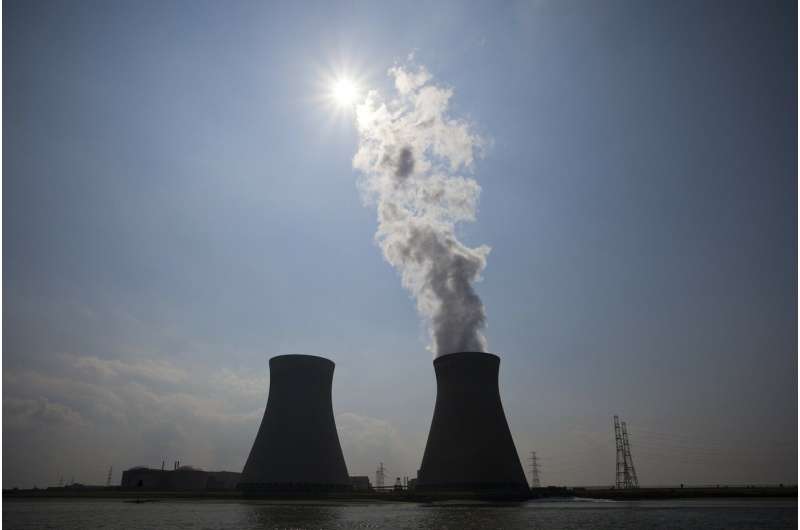
Peter Dutton has announced that under a Coalition government, seven nuclear power stations would be built around the country over the next 15 years.
Experts have declared nuclear power would be expensive and slow to build.
But what might happen to energy prices if the Coalition were to win government and implement this plan?
How might we estimate the cost of nuclear?
By 2035, 50%–60% of the existing coal-fired fleet will very likely have been retired, including Vales Point B, Gladstone, Yallourn, Bayswater and Eraring—all of which will have passed 50 years old.
These five generators contribute just over 10 gigawatts of capacity. It's probably not a coincidence that the seven nuclear plants proposed by Dutton would also contribute roughly 10 gigawatts in total if built.
Neither my team at Monash University nor the Australian Energy Market Operator has run modeling scenarios to delve into the details of what might happen to electricity prices under a high-uptake nuclear scenario such as the one proposed by the Coalition. That said, we can make some broad assumptions based on a metric known as the "levelized cost of electricity."
This value takes into account:
- how much it costs to build a particular technology
- how long it takes to build
- the cost to operate the plant
- its lifetime
- and very importantly, its capacity factor.
Capacity factor is how much electricity a technology produces in real life, compared with its theoretical maximum output.
For example, a nuclear power station would likely run at 90%–95% of its full capacity. A solar farm, on the other hand, will run at just 20%–25% of its maximum, primarily because it's night for half of the time, and cloudy some of the time.
CSIRO recently published its GenCost report, which outlines the current and projected build and operational costs for a range of energy technologies.
It reports that large-scale nuclear generated electricity would cost between A$155 and $252 per megawatt-hour, falling to between $136 and $226 per megawatt-hour by 2040.
The report bases these costs on recent projects in South Korea, but doesn't consider some other cases where costs have blown out dramatically.
The most obvious case is that of Hinkley Point C nuclear plant in the United Kingdom. This 3.2GW plant, which is being built by French company EDF, was recently reported to be now costing around £34 billion (about A$65 billion). That's about A$20,000 per kilowatt.
CSIRO's GenCost report assumed a value of $8,655 per kilowatt for nuclear, so the true levelized cost of electricity of nuclear power in Australia may end up being twice as expensive as CSIRO has calculated.
This article is republished from The Conversation under a Creative Commons license. Read the original article.![]()
Citation: How would a switch to nuclear affect electricity prices for households and industry? (2024, June 21) retrieved 21 June 2024 from https://techxplore.com/news/2024-06-nuclear-affect-electricity-prices-households.html
This document is subject to copyright. Apart from any fair dealing for the purpose of private study or research, no part may be reproduced without the written permission. The content is provided for information purposes only.
